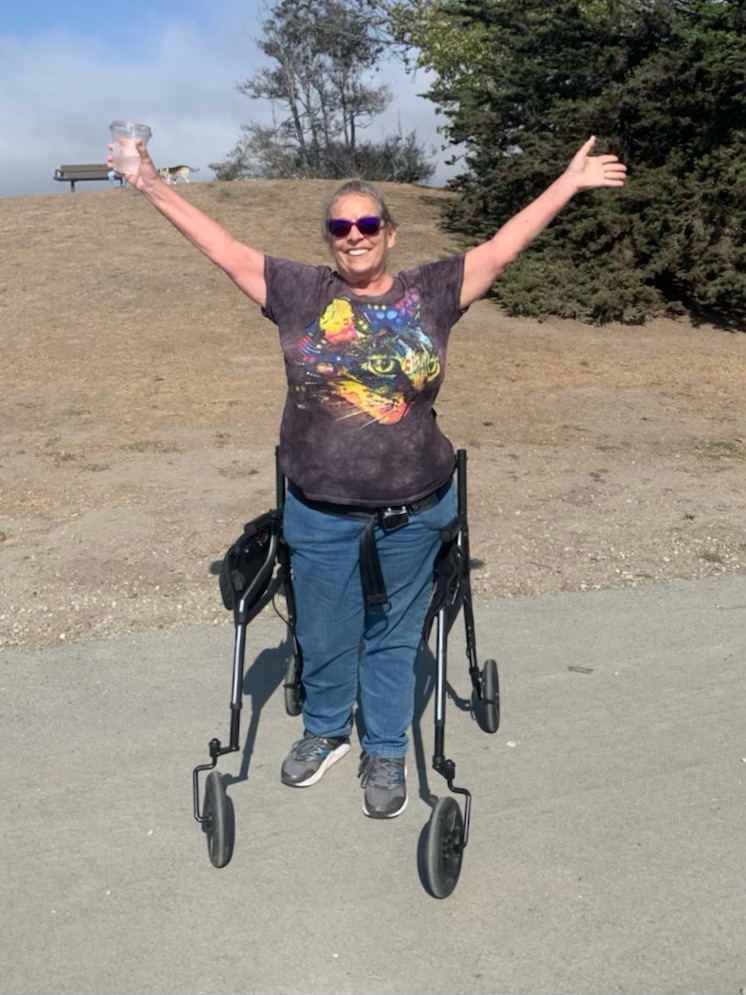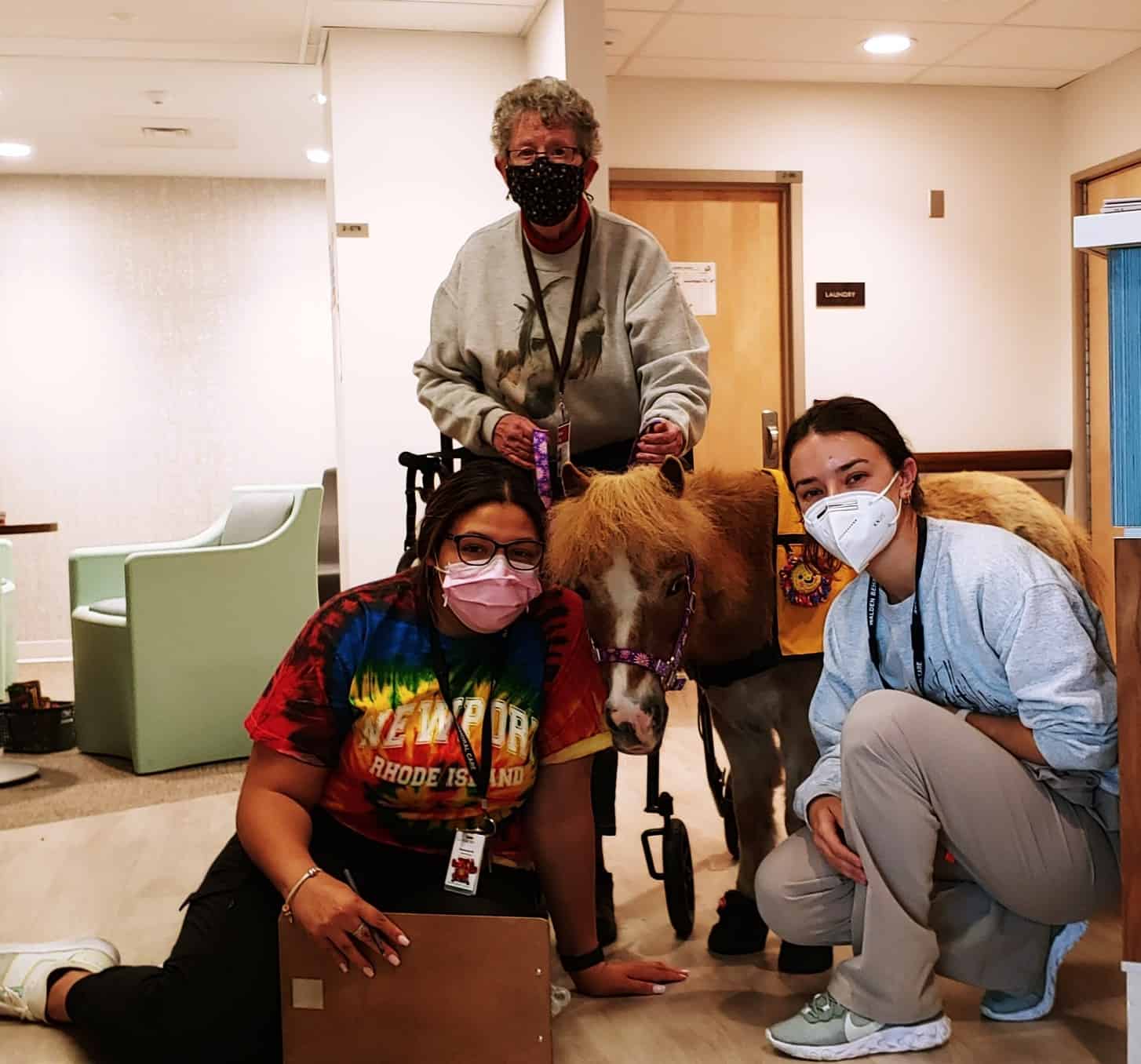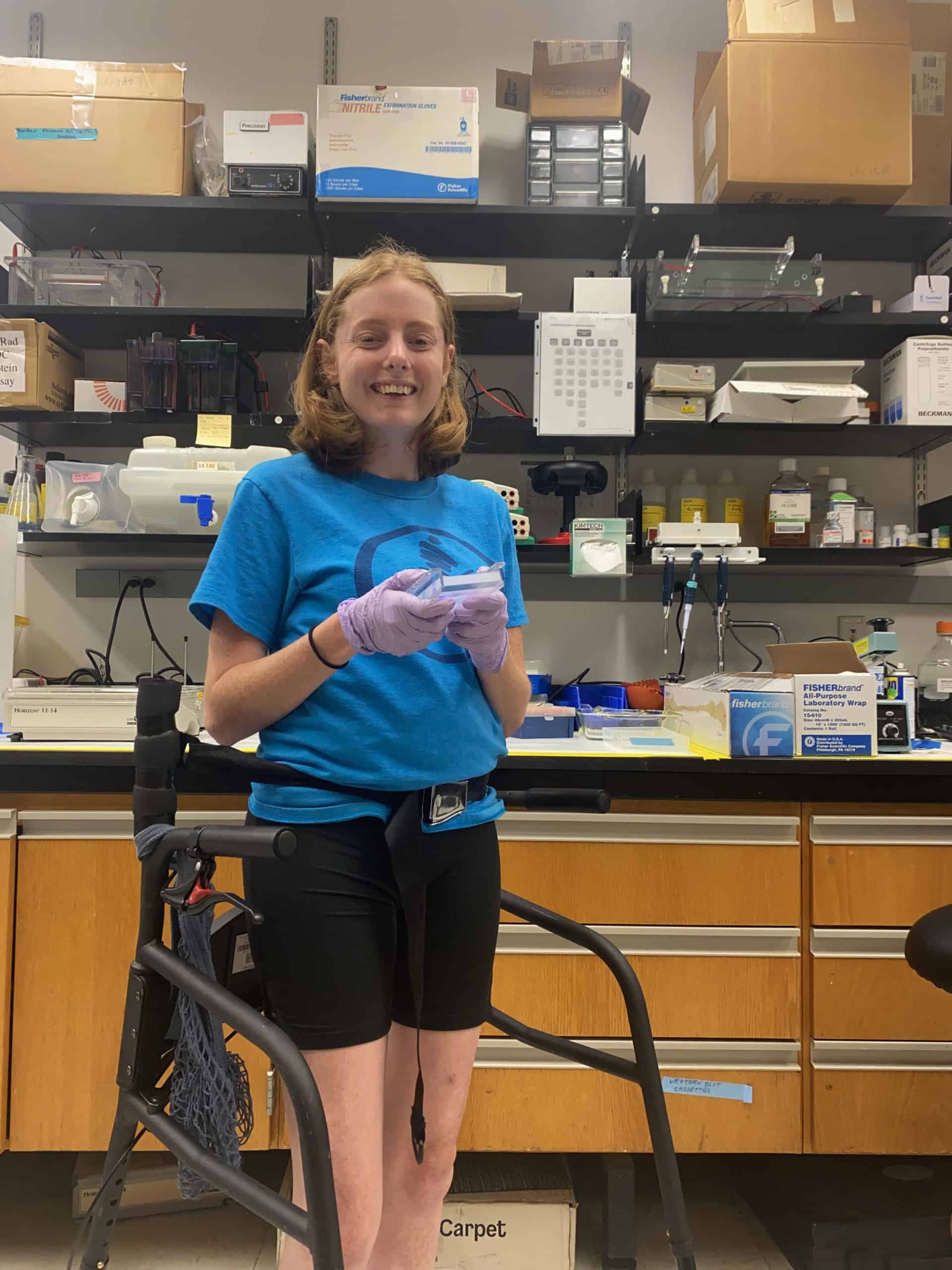I was 10 when my dad first noticed something was wrong. It was after watching one of my basketball games that he brought it up.
 “You don’t run like everyone else,” he said.
“You don’t run like everyone else,” he said.
At home, he told me to stand in the middle of the living room and close my eyes. I would tip over every time I tried.
We went to multiple doctors. For years, they all said nothing was wrong. “She’s just going through puberty,” they told my dad. “You can just wait. She should grow out of it.”
I had been an active kid. I danced and played basketball, softball, and volleyball. But my hand-eye coordination was getting worse. I was becoming more imbalanced.
Finally, after making the two-hour trip to Hennepin County Medical Center in Minneapolis, a doctor told my dad he’d been right. Something was wrong.
The first thing she said was, “I think she has FA. We’ll have to do some testing to be sure.”
Life with Friedreich ataxia
FA is Friedreich ataxia, a rare genetic disease. The tests confirmed it was the cause of all my symptoms. And it’s progressive. My symptoms were going to get worse.
I was 13 when I was diagnosed with FA. After that, I began to stumble when I walked. I would avoid walking near glass doors to avoid the risk of falling into them.
In school, I would use a wheelchair. It was easier to focus on my schoolwork when I didn’t have to work so hard to keep from falling. But to keep my strength up, I started using a four-wheeled walker at 16. I took it with me to college and used it in my dorm room.
I’m 21 now, married to my husband, John, and working as an accountant. This spring, I was down at the University of Florida where I’m participating in a clinical trial for an experimental treatment for FA. I go every six months. It was there at the hospital that I first saw the LifeGlider.
It was the same one Shandra Tratham, a genetics researcher who also has FA, was using. I knew who Shandra was. She and I are both involved in spreading awareness of FA. She posted a video on Instagram of herself trying to fall forward on purpose while in the LifeGlider. Instead of tipping over, she just dangled upside down in it.
That was awesome. When I saw that video, I knew I needed one of those.
I thought that if I felt safe, I would walk more. The problem is that I have to keep my legs hyperextended for me to walk. Sometimes, when I’m using a regular walker, my legs buckle and I just fall to the ground.
On this visit, I tried it myself. I was convinced and ordered it the next day.
It wasn’t what I expected. Not at first, anyway.
How My LifeGlider Corrects My Walk
My focus has always been on keeping up my strength and endurance. With a progressive disease like this, you can quickly lose what you’ve gained. I work out five, sometimes six times a week. My four focus areas are endurance, strength, balance, and stretch.
For endurance, it may sound odd, but I crawl on all fours. Since I can’t run, crawling is a great way to engage my entire body. I lift hand weights and use resistance bands for strength. I stretch after every workout. And for balance, I practice walking.
So I figured that once I got my LifeGlider, I would be able to walk all day. I thought it would be a breeze. But I hadn’t really tried walking in it yet. What I didn’t expect was how different it would feel to walk upright, like a “normal” person. I couldn’t do it. I’d been so excited, and now I was crying.
I understand now that it’s so different from the four-wheeled walker I was used to. With those, you lean forward on your arms and use your momentum to go forward. With the LifeGlider, you stand straight up. Instead of using momentum, I would have to build up more strength in my legs to go forward.
Introducing Ozzie
That was two months ago. Since then, I’ve given my LifeGlider a name: Oz, a Hebrew name that signifies “strength” or “warrior.” But I usually call her Ozzie.
I’ve been walking with Ozzie and getting stronger every day. John has been taking videos of me. When I complained that I wasn’t getting any better, he showed me the videos. I couldn’t believe how much I really was improving. I still am.
And the improvement isn’t just when I have Ozzie. John and I were at my parents’ house, where they have a four-wheeled walker. Both our dads commented on how much better I’m walking, even while using the old walker. More upright, more balanced.
I also love that I have more freedom to cook. As a person who’s into health and fitness, I love trying new recipes, putting my own twist on them. Now, with my hands free, I can stand up and cook, reach the top of the fridge or the top of the pantry, without having to ask John for help.
I use Ozzie to play with my dog, Oneida, too. She’s a 25-pound Brittany spaniel (full-grown – she was the runt of her litter). I can stand up to pet her and play fetch with her, instead of always sitting down to avoid falling.
Conquering FA
I think everyone should at least try a LifeGlider. There’s a 30-day return policy, so if it doesn’t work, oh well, you tried.
Trying new things is part of what my Instagram account, @conqueringfa, is about. When I was first diagnosed, there wasn’t really anyone on social media talking about FA, saying, “Hey, I’m trying this new thing – eating this, trying this vitamin, doing this workout.” There was no one to look up to.
For someone just diagnosed, or just the average person, I want to be that positive person to look up to. I started the account a year and a half ago, sharing workout and nutrition tips. My goal was to help at least one person.
Since then, maybe 20, 25 people have messaged me. They say they’ve shown my videos to their physical therapist, or their daughter has FA and they’re trying to encourage her to eat the way I do. It’s great to hear I’m making a difference in someone’s life.
If you put your mind to something, it’s within reach. I never thought I would be able to stand up and cook again. And I look forward to doing more as I get better at using my LifeGlider, like getting into it by myself and going shopping without John there to help me.
I look forward to not feeling so handicapped when I’m out in public. With my LifeGlider, I’ll be able to do simple things, like walk into a public restroom with confidence. I’ll have more of the sense of independence that I have at home.
That’s what I’m putting my mind to. And that makes everything possible.
###


